Dig deep into the data on the chain, which protocols have Arbitrum's income and funds flowed to?
The Arbitrum ecosystem is taking off, data analyst @defi_mochi uses Flipside (a highly customized data development tool with a high degree of freedom to display key economic indicators of a specific chain to track its health and overall parameters) analysis All Arbitrum data on DefiLlama. The following content is organized and compiled by Odaily, which can give you a clearer understanding of the entire ecosystem of Arbitrum.
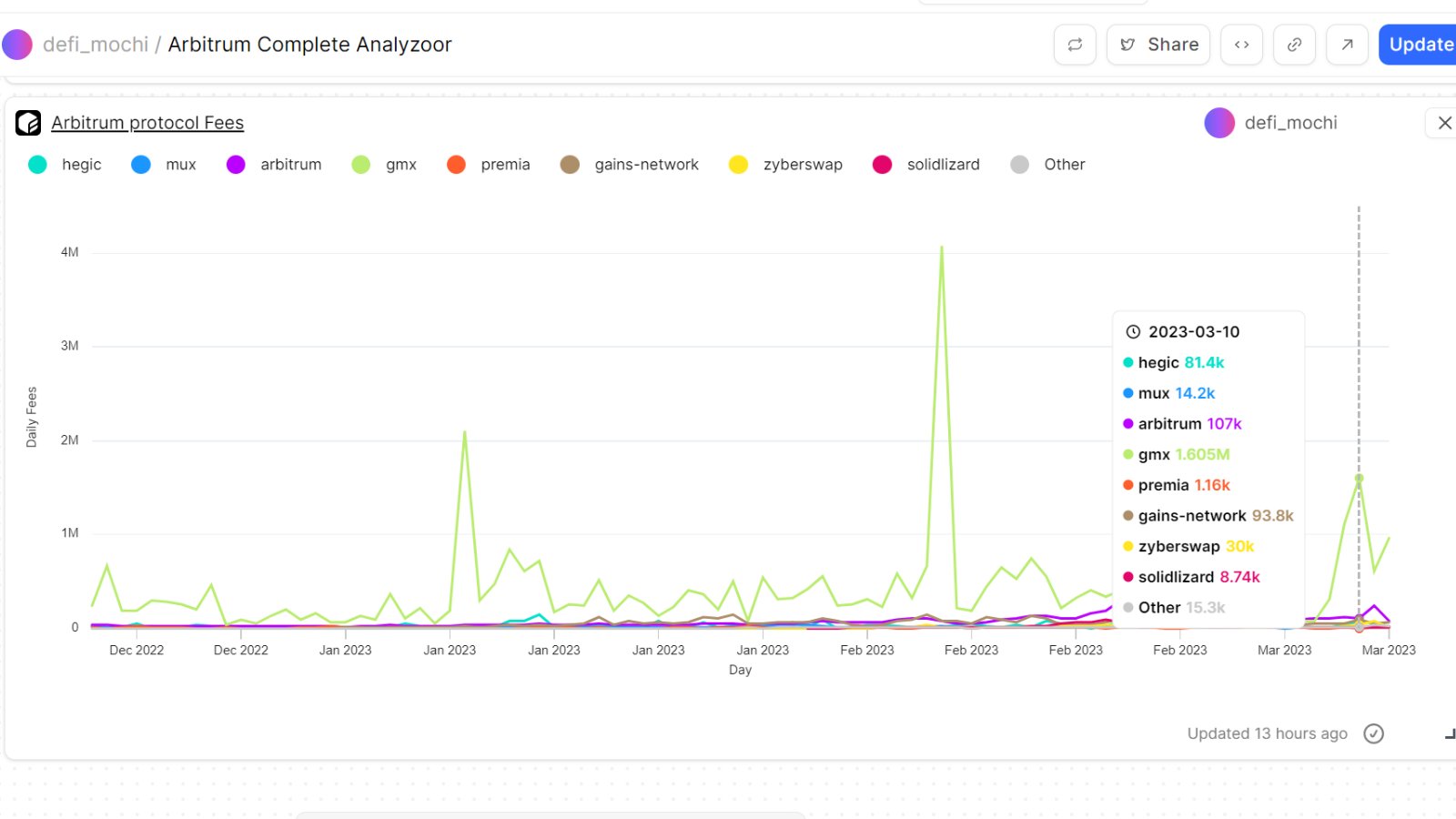
We saw two large deposits into Arbitrum in February with a balance of over $450M, which I suspect is due to exchange listings and a large amount of Fomo funds entering the Arbitrum ecosystem.
Due to recent market impacts, while funds into Arbitrum have generally increased, bridging deposits have declined slightly. From the figure below, it can be clearly seen that bridging deposits have dropped from above US$1 billion to below US$200 million, a drop of more than 80%.
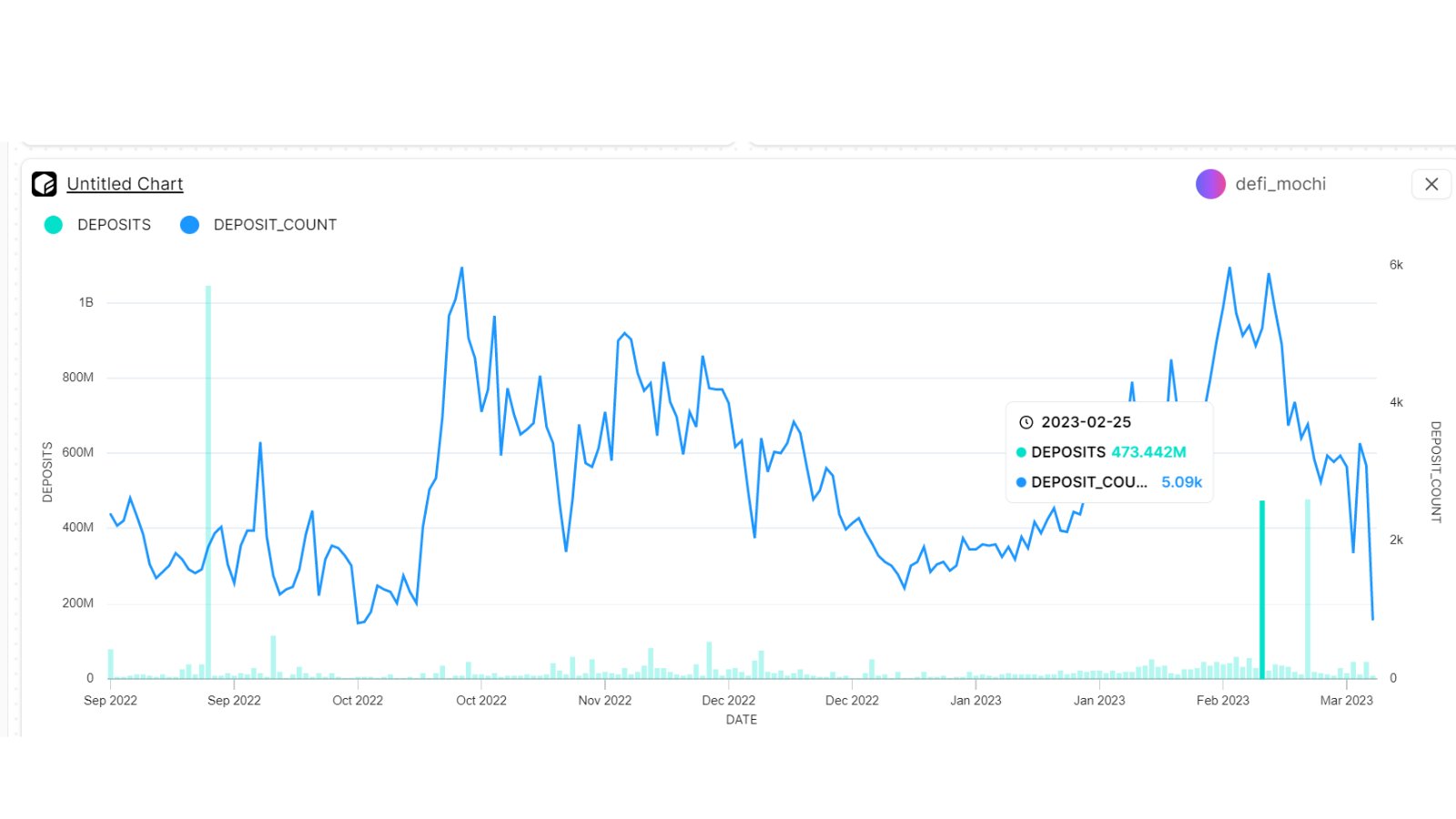 But during times of panic, both DEX and options volumes on Arbitrum increased, and the increased options volume led to an uptick in GMX activity as well. Due to the arbitrage between USDC and USDT, the trading volume of DEX has increased significantly. It can be seen that on March 11, the trading volume of DEX and options reached a peak, and the trading volume of both exceeded 800 million US dollars. Compared with the data of the past few months, the increase is relatively large.
But during times of panic, both DEX and options volumes on Arbitrum increased, and the increased options volume led to an uptick in GMX activity as well. Due to the arbitrage between USDC and USDT, the trading volume of DEX has increased significantly. It can be seen that on March 11, the trading volume of DEX and options reached a peak, and the trading volume of both exceeded 800 million US dollars. Compared with the data of the past few months, the increase is relatively large.
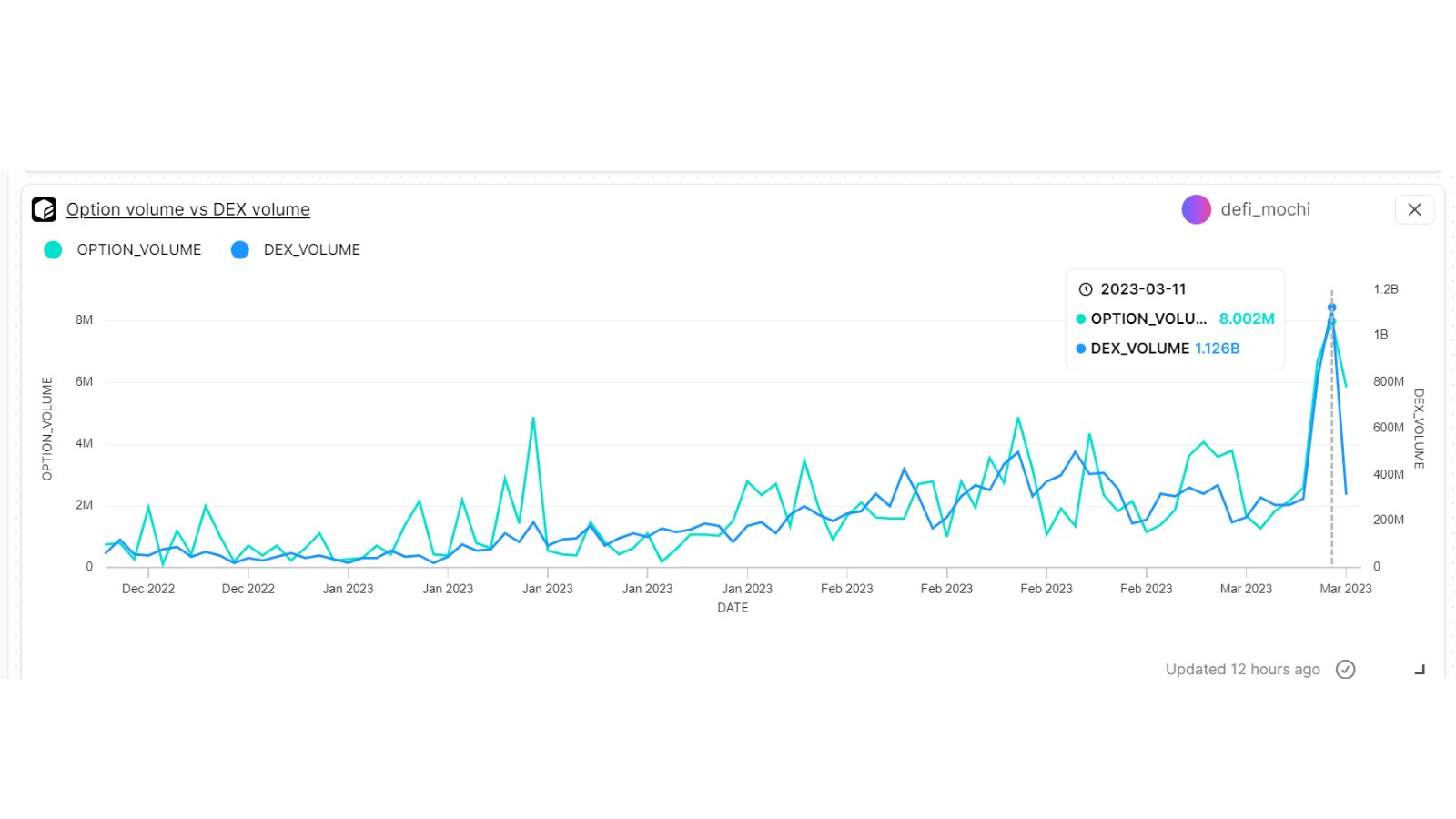 This massive activity and bridging deposits has rocketed Arbitrum's TVL to $2 billion and an ATH. So where do these revenues and funds go?
This massive activity and bridging deposits has rocketed Arbitrum's TVL to $2 billion and an ATH. So where do these revenues and funds go?
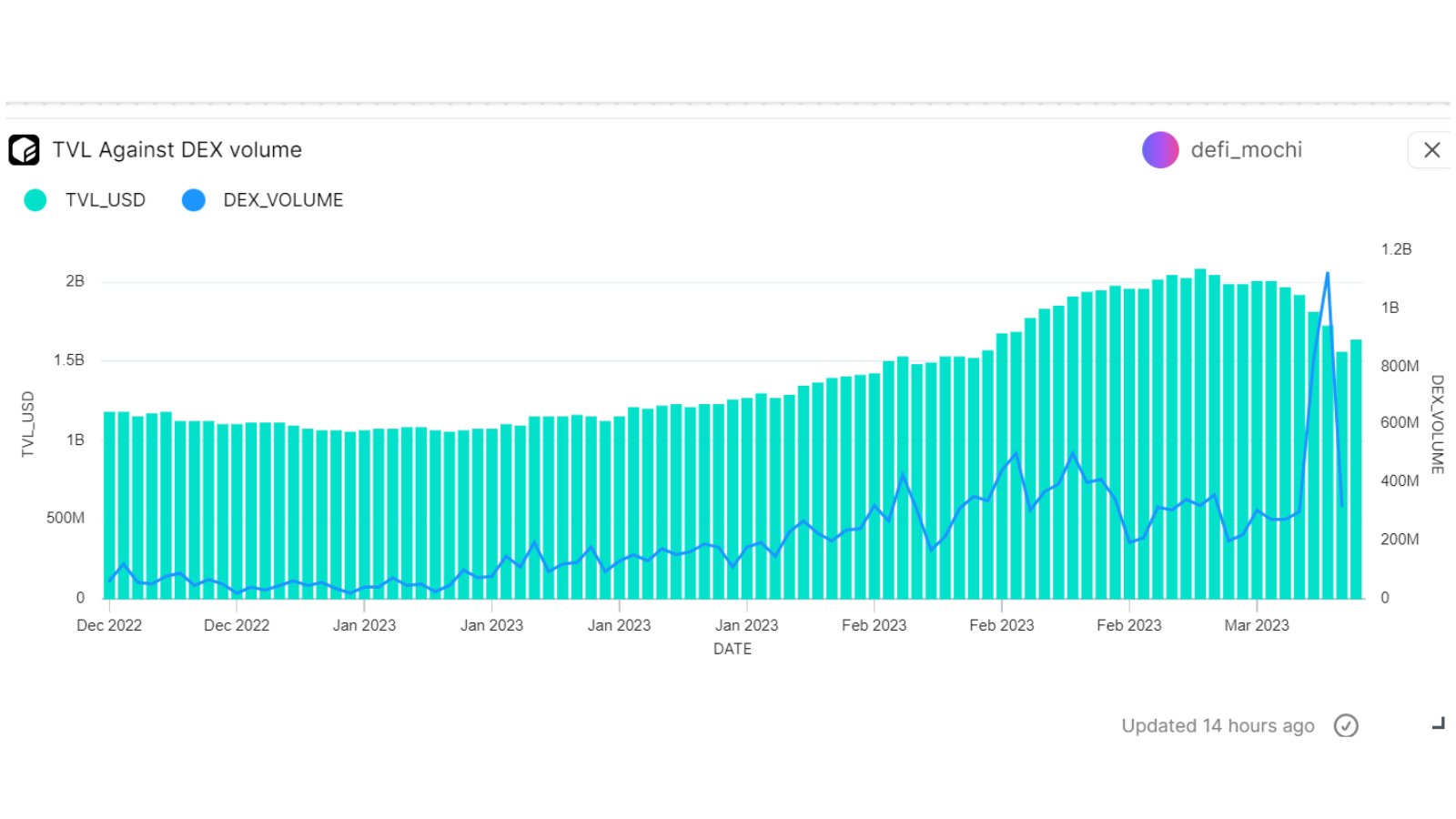 According to DefiLlama data, 70% of Arbitrum's fee market share is overwhelmingly occupied by GMX, and Gains Network has also occupied 7% of the fee market after its launch in late December.
According to DefiLlama data, 70% of Arbitrum's fee market share is overwhelmingly occupied by GMX, and Gains Network has also occupied 7% of the fee market after its launch in late December.
In addition to fees charged by Arbitrum itself, the market share of the top 5 protocols charging fees is as follows:
1. GMX, which creates decentralized cryptocurrency derivatives and spot exchanges for large traders, accounts for 70.84%, and is also the leading DEX derivatives on Arbitrum.
2. 11.25% of fees charged by Arbitrum itself.
3. Gains Network, a decentralized perpetual contract trading platform that provides cryptocurrency and foreign exchange trading options and leveraged trading, accounts for 7.88%.
4. Hegic, an on-chain options platform that provides WBTC and ETH option purchase services, accounted for 3.5%.
5. MUX Protocol, a decentralized leveraged trading protocol with zero slippage and up to 100 times leverage, accounted for 1.31%.
In addition, there are protocols such as Solidlizard, Zyberswap, and Premia.
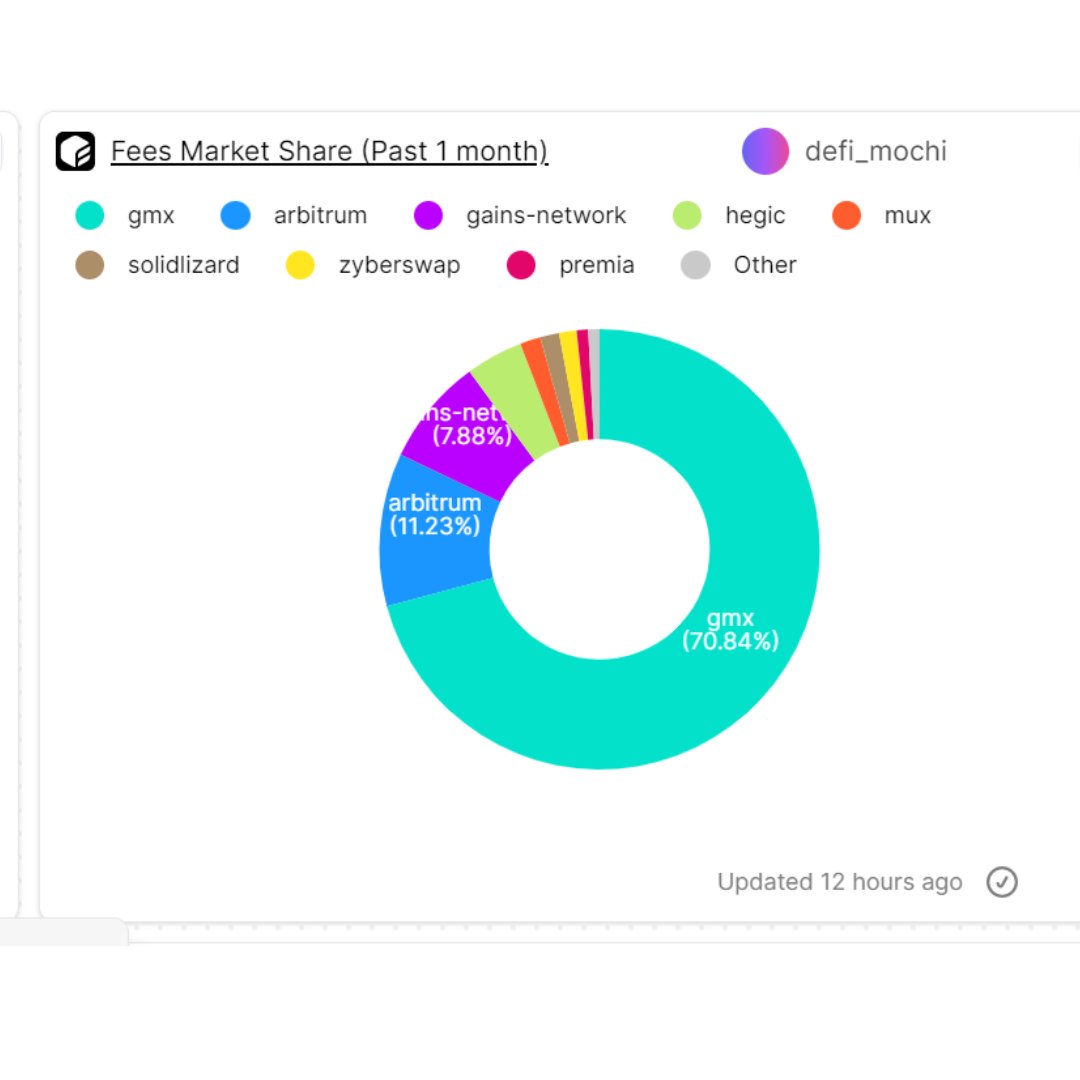 From the data I was able to discover which protocols could be deeply involved. So I created this table again based on the monthly fee data for each agreement on Arbitrum, with monthly changes in percentages, the agreements that stood out to me were:
From the data I was able to discover which protocols could be deeply involved. So I created this table again based on the monthly fee data for each agreement on Arbitrum, with monthly changes in percentages, the agreements that stood out to me were:
1. Lyra, an option protocol integrated with GMX, has received $3 million in financing from Framework Ventures and GSR. Last month, its fees increased 276%.
2. ZyberSwap, a DEX combining Uniswap V2 and Curve, saw its fees increase by 556% last month, but its tokens experienced a death spiral to near zero at the end of January. Thanks to the recovery of DeFi on Layer 2, the recent momentum is obvious. But also note that while volume on ZyberSwap appears to be picking up, TVL has remained stagnant so far. Most of the trading volume comes from their stable trading pair USDT/DAI/USDC.
3. Arbitrum, whose fees rose 114% last month.
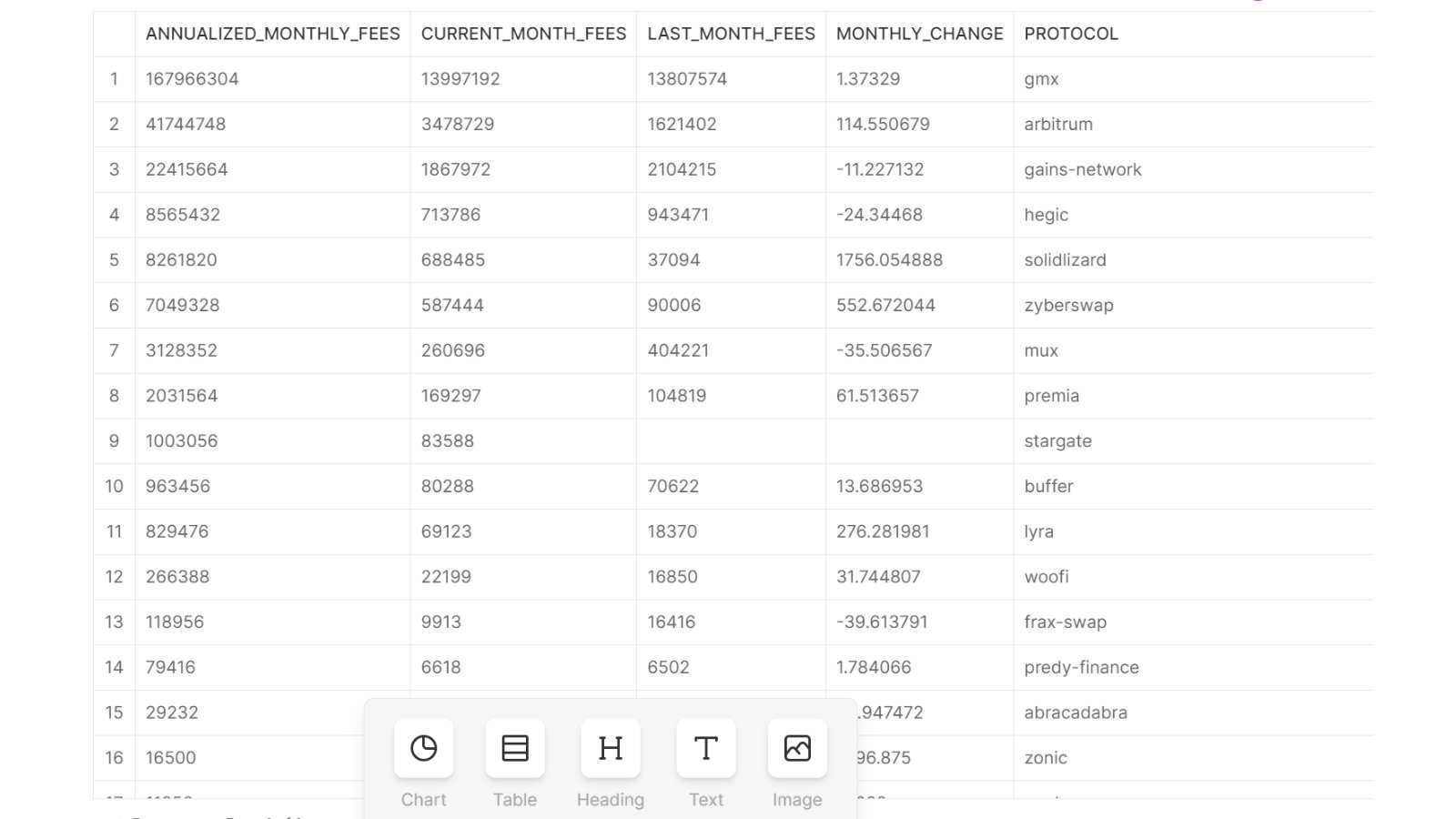
Analyzing weekly data from these protocols, Lyra has performed impressively, up nearly 76% over the past week. In addition, due to the impact of the USDC unanchoring event, projects such as ZyberSwap also have obvious growth momentum.
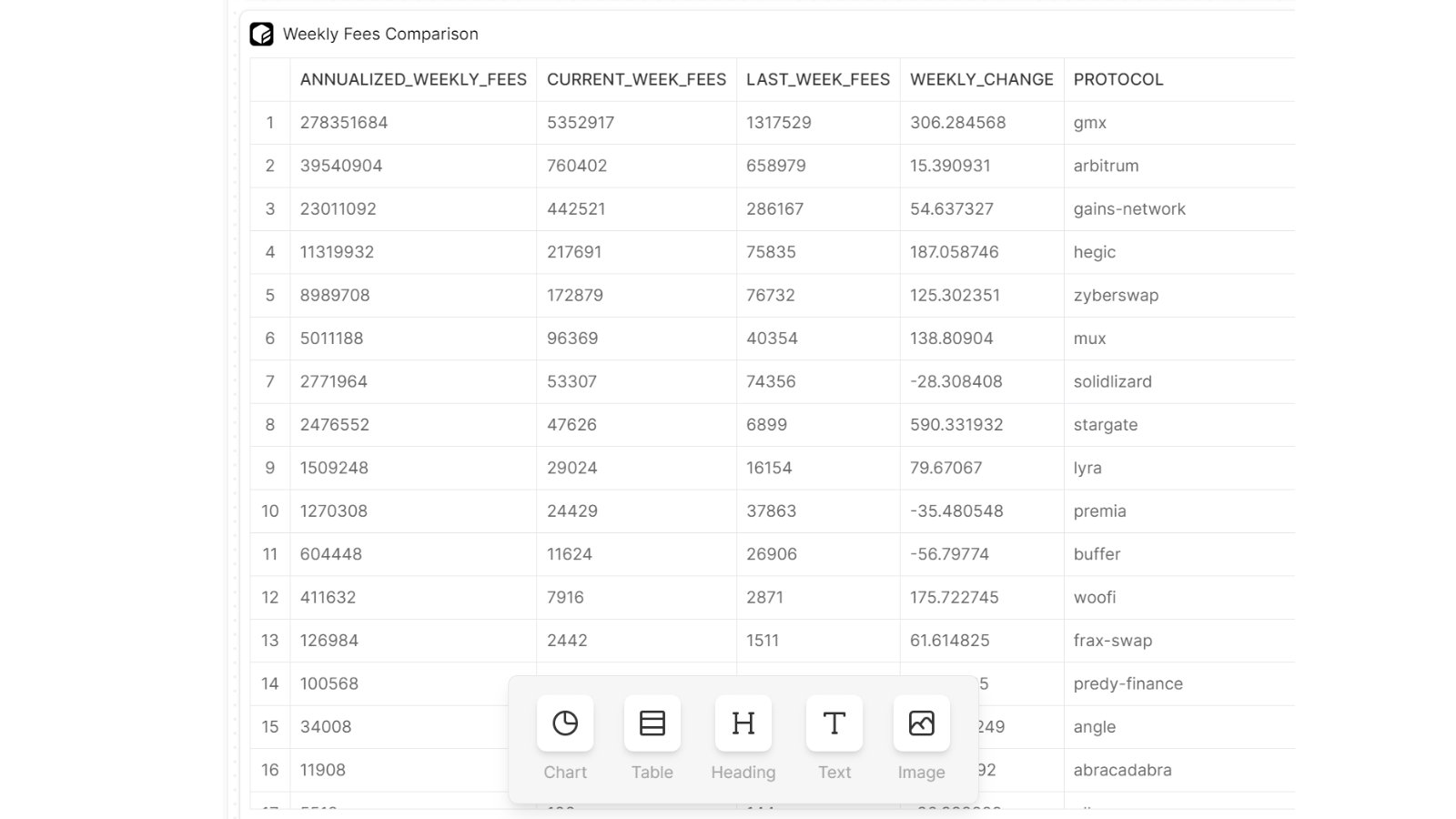
But I was still curious about Lyra, so I went to Tokenterminal to check its full data, and there are amazing growth in all aspects:
1. TVL: Up 20% to $35.86 million.
2. Price/fee: $4.33 (down 31.7%).
3. The annualized transaction volume has increased by another 20% on the basis of the recent surge.
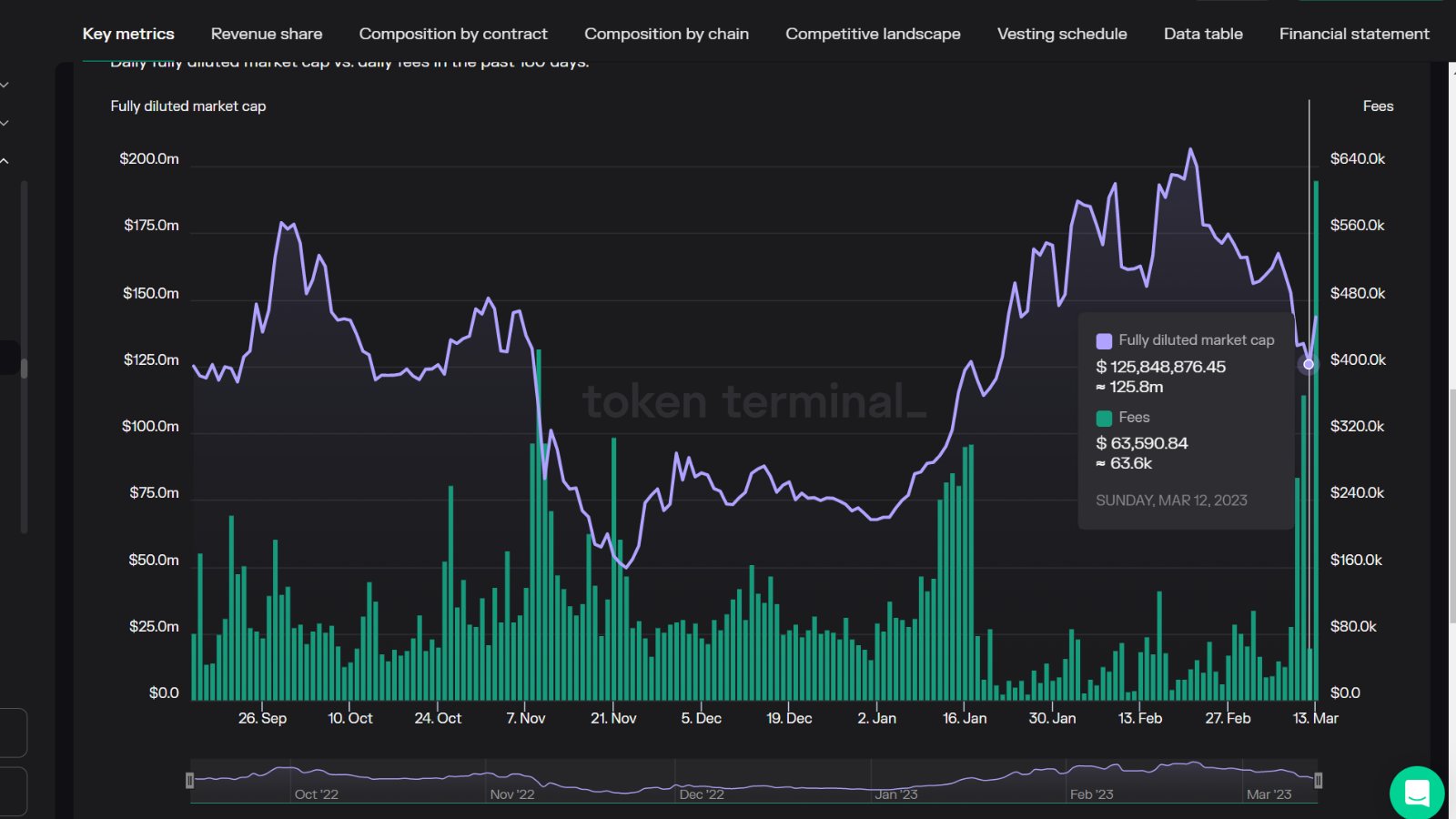
Therefore, I am personally very bullish on this fundamental uptrend. The above is the data analysis of @defi_mochi, which does not represent the views of Odaily, nor does it constitute investment advice. Please analyze and judge by yourself.



